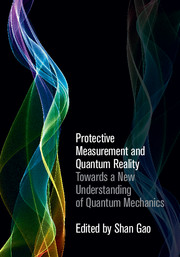Book contents
- Frontmatter
- Dedication
- Contents
- List of Contributors
- Preface
- Acknowledgements
- 1 Protective measurement: an introduction
- Part I Fundamentals and applications
- Part II Meanings and implications
- 7 Measurement and metaphysics
- 8 Protective measurement and the explanatory gambit
- 9 Realism and instrumentalism about the wave function: how should we choose?
- 10 Protective measurement and the PBR theorem
- 11 The roads not taken: empty waves, wave function collapse and protective measurement in quantum theory
- 12 Implications of protective measurement on de Broglie–Bohm trajectories
- 13 Entanglement, scaling, and the meaning of the wave function in protective measurement
- 14 Protective measurement and the nature of the wave function within the primitive ontology approach
- 15 Reality and meaning of the wave function
- Index
- References
9 - Realism and instrumentalism about the wave function: how should we choose?
from Part II - Meanings and implications
Published online by Cambridge University Press: 05 January 2015
- Frontmatter
- Dedication
- Contents
- List of Contributors
- Preface
- Acknowledgements
- 1 Protective measurement: an introduction
- Part I Fundamentals and applications
- Part II Meanings and implications
- 7 Measurement and metaphysics
- 8 Protective measurement and the explanatory gambit
- 9 Realism and instrumentalism about the wave function: how should we choose?
- 10 Protective measurement and the PBR theorem
- 11 The roads not taken: empty waves, wave function collapse and protective measurement in quantum theory
- 12 Implications of protective measurement on de Broglie–Bohm trajectories
- 13 Entanglement, scaling, and the meaning of the wave function in protective measurement
- 14 Protective measurement and the nature of the wave function within the primitive ontology approach
- 15 Reality and meaning of the wave function
- Index
- References
Summary
Introduction
It is not exaggeration to claim that one of the major divides in the foundations of non-relativistic quantum mechanics derives from the way physicists and philosophers understand the status of the wave function. On the instrumentalist side of the camp, the wave function is regarded as a mere instrument to calculate probabilities that have been established by previous measurement outcomes. On the other “realistic” camp, the wave function is regarded as a new physical entity or a physical field of some sort. While both sides agree about the existence of quantum “particles” (the so-called theoretical entities), and therefore reject the radical agnosticism about them preached by van Fraassen (1980), the various “realistic” (and consequently, instrumentalist) philosophies of quantum mechanics are typically formulated in different, logically independent ways, so their implications need to be further investigated.
For instance, on the one hand it seems plausible to claim that a realistic stance about the wave function is not the only way to defend “realism” about quantum theory. One can support a “flash” or a “density-of-stuff ” ontology (two variants of GRW), or an ontology of particles with well-defined positions (as in Bohmian mechanics), as primitive ontologies for observer-independent formulations of quantum mechanics (Allori, Goldstein, Tumulka and Zanghí, 2008). “Primitive ontologies”, as here are understood, are not only a fundamental ground for other ontological posits, but also entail a commitment to something concretely existing in spacetime (see also Allori, 2013). On the other hand, however, it is still debated whether such primitive ontologies can be autonomous from some form of realism about the wave function (Albert, 1996).
In order to discuss this problem, we begin with a preliminary clarification of the meaning of “realism” and “instrumentalism” in physics, which are often subject to ideological and abstract discussions that often have little to do with the practice of physics (Section 9.2).
- Type
- Chapter
- Information
- Protective Measurement and Quantum RealityTowards a New Understanding of Quantum Mechanics, pp. 119 - 134Publisher: Cambridge University PressPrint publication year: 2015
References
- 2
- Cited by



